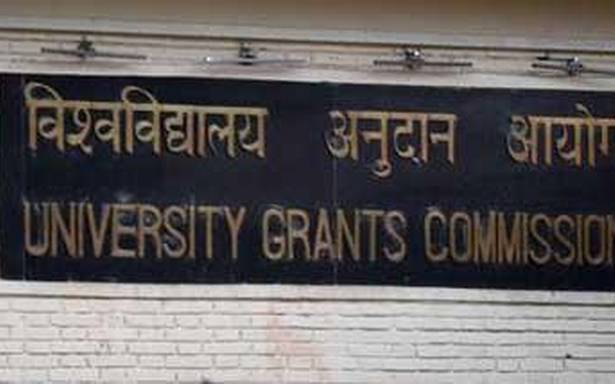Tamil, Malayalam study material includes claims that cow dung protects from nuclear radiation, slaughter causes quakes
The University Grants Commission has written to all Vice-Chancellors asking them to encourage students in their universities and affiliated colleges to write the Central government’s “indigenous cow science” examination later this month.
The study material for the examination includes claims that cow dung is used as protection against radiation in nuclear centres in India and Russia, and protected Bhopal residents from the gas leak. It claims a link between cow slaughter and earthquakes and posits that Jersey cows are lazy and give poor quality milk, while indigenous cow milk is yellow, because it has traces of gold.
This controversial material was removed from the English version of the study text after it caused an uproar last month. However, several regional language versions of the study material, including Tamil and Malayalam still contain these claims.
The examination is run by the Rashtriya Kamdhenu Aayog (RKA), set up under the Animal Husbandry Ministry to disseminate information on the “economic, scientific, environmental, health, agricultural and spiritual relevance of the indigenous cow”, said the UGC letter, dated February 12. The all-India examination, which is open to school and college students as well as other citizens, will be held on February 25.
“I write this to request you, to give wide publicity to this initiative and encourage students to enroll/ register themselves for this examination,” wrote UGC Secretary Rajnish Jain.
The revised English version of the study material now has three sections. “Divinity is locked up in the anatomy of cow as she is said to embody the elements of purity, reality and existence. Her face epitomizes innocence – her eyes reflect peace, her horns, royalty and her ears, intelligence. Her udders are the fountain of ambrosia in the form of milk,” says the first section, which is titled ‘Kamdhenu Desi Cows and some Shlokas in Scripture’. Apart from quotes from the Vedas, it also cites the Bible and Muslim theologian Al Ghazali to make its case.
There is a section listing out the salient features of various indigenous cattle breeds, and a third highlighting the benefits of panchgavya, or five products obtained from desi cows — milk, ghee, curd, urine and dung. On cow urine, for instance, the study material claims that “Its compositional properties are heated, juicy, and basic in nature. Its amazing germicidal power to kill varieties of germs destroys most germs related to diseases. Cow urine is great elixir, proper diet, pleasing to heart, the giver of mental and physical strength, enhances longevity. It removes all blood disorders.”











